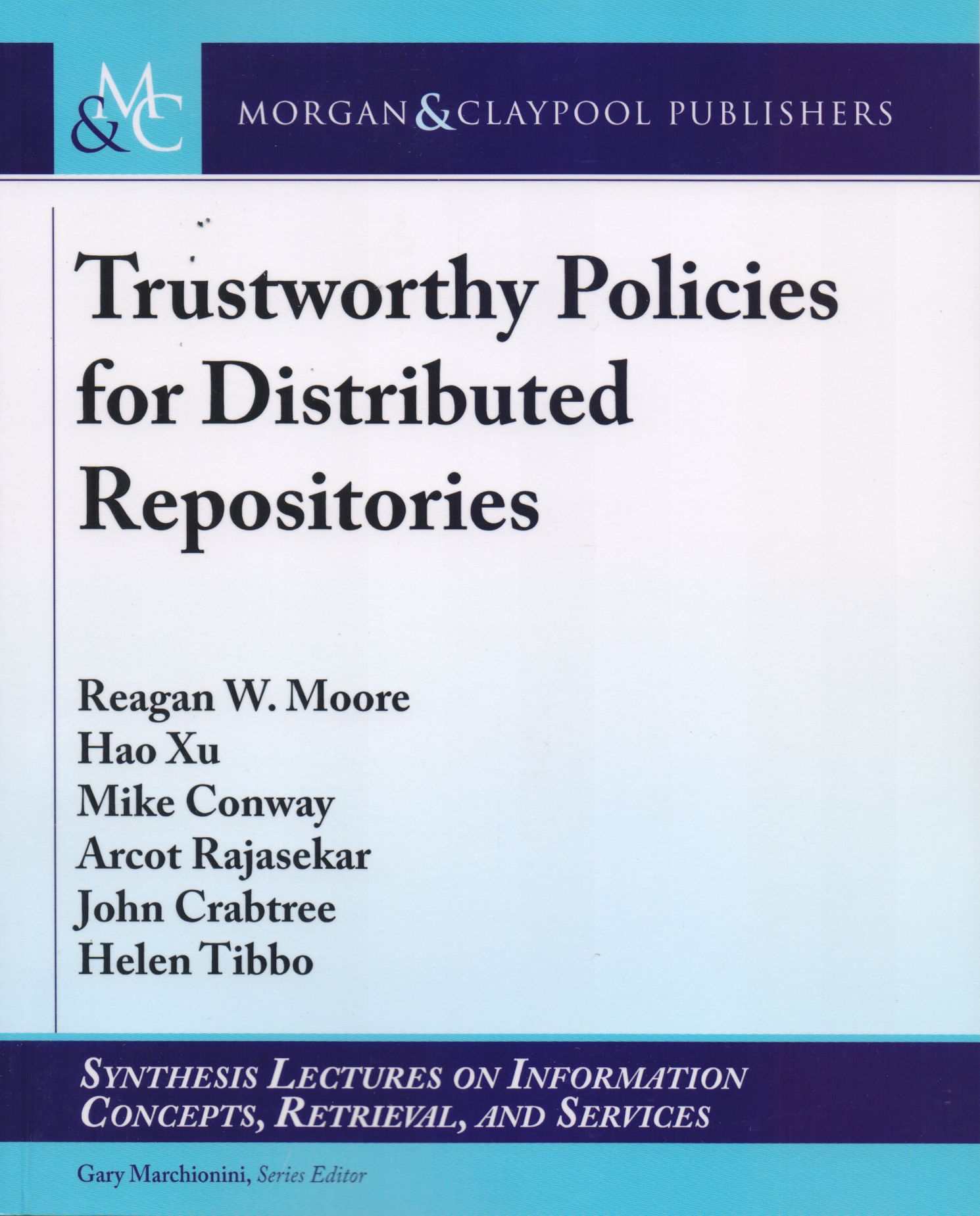Libros relacionados
 |
Engineering Principles In Everyday Life For Non-Engineers B. Niku, Saeed Morgan & Claypool Publishers |
 |
Scholarly Collaboration On The Academic Social Web He, Daqing / Jeng, Wei Morgan & Claypool Publishers |
 |
Database Anonymization: Privacy Models, Data Utility, And Microaggregation-Based Domingo-Ferrer, Josep / Sánchez, David / Soria-Comas, Jordi Morgan & Claypool Publishers |
 |
Dynamic Information Retrieval Modeling Hui Yang, Grace / Sloan, Marc / Wang, Jun Morgan & Claypool Publishers |
 |
Learning From Multiple Social Networks Nie, Liqiang / Song, Xuemeng / Chua, Tat-Seng Morgan & Claypool Publishers |
 |
Notion Of Relevance In Information Science, The: Eveybody Knows What Relevance I Saracevic, Tefko Morgan & Claypool Publishers |
 |
Semantic Interaction For Visual Analytics: Inferring Analytical Reasoning For Mo Endert, Alex Morgan & Claypool Publishers |


|
Título: Trustworthy Policies For Distributed Repositories | |
| Autor: W. Moore, Reagan / Xu, Hao / Conway, Mike / Rajasekar, Arcot | Precio: $1375.00 | |
| Editorial: Morgan & Claypool Publishers | Año: 2016 | |
| Tema: Informacion, Conceptos | Edición: 1ª | |
| Sinopsis | ISBN: 9781627058858 | |
| A trustworthy repository provides assurance in the form of management documents, event logs, and audit trails that digital objects are being managed correctly. The assurance includes plans for the sustainability of the repository, the accession of digital records, the management of technology evolution, and the mitigation of the risk of data loss. A detailed assessment is provided by the ISO-16363:2012 standard, "Space data and information transfer systems - Audit and certification of trustworthy digital repositories." This book examines whether the ISO specification for trustworthiness can be enforced by computer actionable policies. An implementation of the policies is provided and the policies are sorted into categories for procedures to manage externally generated documents, specify repository parameters, specify preservation metadata attributes, specify audit mechanisms for all preservation actions, specify control of preservation operations, and control preservation properties as technology evolves. An application of the resulting procedures is made to enforce trustworthiness within National Science Foundation data management plans | ||
Librería Bonilla SA de CV © Todos los derechos reservados. 2019
Última actualización: Jul 2019




